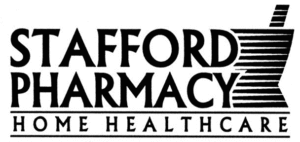Health Canada is advising Canadians to avoid using boric acid for arts and crafts projects, such as homemade slime, or modelling clay. Health Canada is also advising against making homemade pesticides with boric acid.
Boric acid, sometimes also called boron or borax, is found in the environment and Canadians are exposed to it naturally through food (such as fruit and vegetables) and drinking water. Canadians can also be exposed to boric acid through a variety of commonly used products, such as pesticides, cleaning products, homemade arts and craft materials, cosmetics, swimming pool and spa chemicals, and drugs and natural health products.
A recent draft risk assessment by Health Canada has found that overexposure to boric acid has the potential to cause developmental and reproductive health effects. Since Canadians are already exposed to boric acid naturally through their diets and water, Health Canada is advising that exposure from other sources should be reduced as much as possible, especially for children and pregnant women. The concern is not with any one product, but rather multiple exposures from a variety of sources.
With this in mind, the department has also announced that many existing products containing boric acid will be removed from the marketplace.
What you should do
Canadians can minimize their exposure to boric acid from sources other than food and water. Here are some steps you can take.
- Use recipes to make children’s arts and crafts at home (e.g. slimes) that do not contain boric acid. Do not use boric acid to make homemade pesticides.
- Check the product label for terms such as “borax” and “boron-containing”. You can also contact the manufacturer to find out if their products contain boric acid.
- Follow all directions on cleaning products. Store cleaning products out of sight and reach of children.
- Dispose of chemicals properly based on the manufacturer’s directions.
- Use health products that have a drug identification number (DIN), natural product number (NPN) or homeopathic medicines number (DIN-HM). These numbers mean the product is regulated under the Food and Drugs Act and has been reviewed by Health Canada.
If you have a pesticide with any of the following ingredients on the label, check Health Canada’s new pesticide label search mobile app for the most recent product information and label instructions:
- boric acid
- borax (disodium tetraborate pentahydrate)
- borax (disodium tetraborate decahydrate)
- disodium octaborate tetrahydrate
- zinc borate
Health Canada advises Canadians not to use pesticides that contain boric acid that have had their registrations cancelled in and around the home past their expiry date. You may also want to consider using alternative products readily available during the phase out period of these products. For information on the safe disposal of pesticides, please consult your provincial or territorial government.
Report health or safety concerns
Report any adverse events related to consumer products or a pest control product to the manufacturer, who is required by law to report it to Health Canada. You may also report an incident directly to Health Canada by completing an incident report form.
If you experience an adverse reaction related to a non-prescription or natural health product, report it to Health Canada as well as the establishment where the product or service was purchased.
For additional information or the original bulletin from Health Canada see: Information Update – Health Canada advises Canadians to avoid homemade craft and pesticide recipes using boric acid


